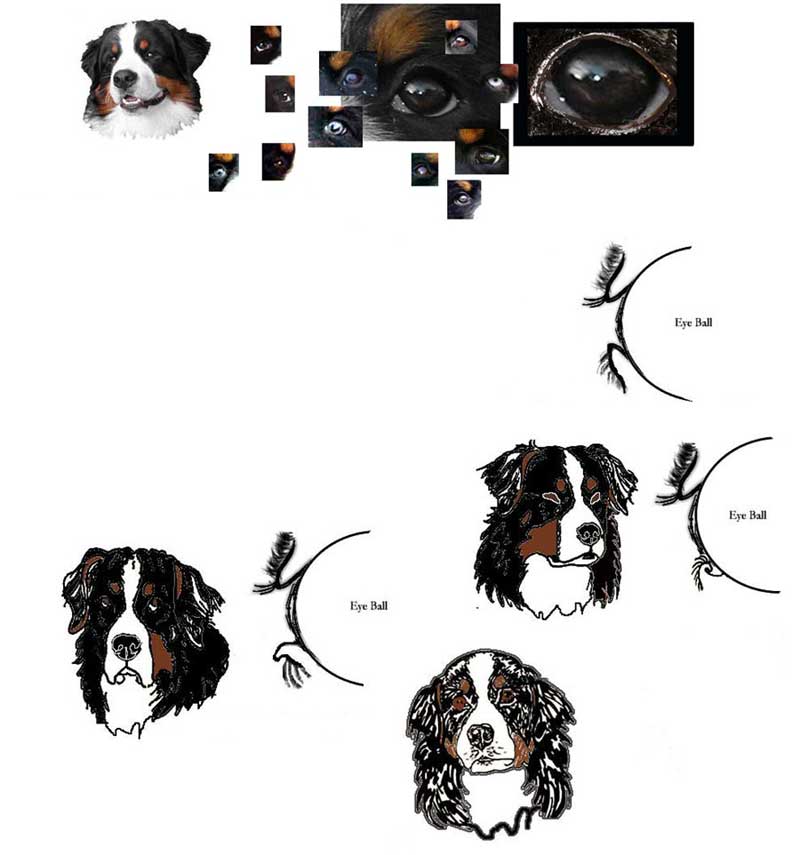
Everted eye (ectropion) results in a droopy look.
Inverted eyelid (entropion) usually affects lower lid, may affect upper lid.
Round eyes
The eyes are dark brown and slightly oval in shape with close fitting eyelids. Inverted or everted eyelids are serious faults.
Entropion (rolling in of the eyelids) and ectropion (rolling out of the eyelids) are conditions caused by abnormal eye position in relationship to the globe of the eye. An entropion condition may cause irritation due to lids or lashes scratching the eye or conjuntiva. Surgical correction may be required as the condition can be extremely uncomfortable and/or interfere with affected dog's vision. An ectropion condition may cause irritation of the eye and surrounding tissue because loose fitting lids act as debris catchers. Foreign matter such as pollen and dust collecting in the eye's moist environment can become a breeding ground for bacteria and infection. Depending on the severity of the condition, surgical correction may be required. Most cases of entropion and ectropion are heritable in so far as conformation of the head, size of orbit, size of globe and eyelid conformation are heritable.
Normal eye ~ Dogs do not have lower lashes.
Progressive retinal atrophy is a heritable condition seen in a few BMD's. Cataracts, some which affect vision, some which do not, also occur in Bernese Mountain Dogs. Eye examination by a canine opthomolgist to determine the eye health of Bernese used for breeding and certification of eyes by (CERF) is advised. For more on genetic eye conditions and testing information visit The Canine Eye Registration Foundation.
For AKC conformation events, blue eye(s) color is a disqualification. Blue eye in Bernese has not historically been associated with other heritable health conditions. Blue eye color has not been known to affect the dog's vision. Blue eye color is inherited. Yellow or light brown eyes are not desirable. Round eyes are not desirable.
*Eye color in Bernese puppies under four months of age may have a hazel or bluish cast. A practiced observer can usally determine if a pup has a blue eye(s) between the age of 3-4 weeks.
Eyes